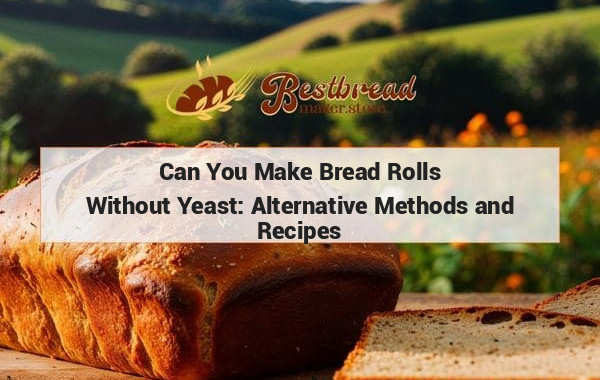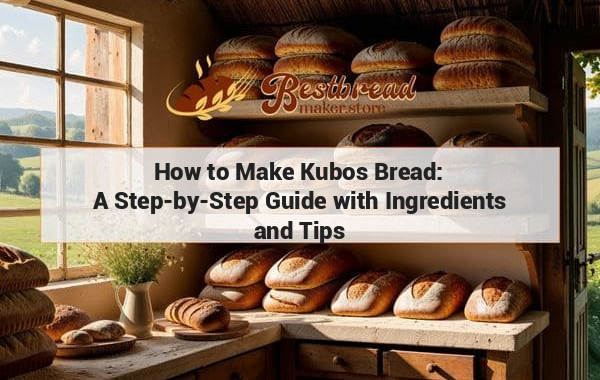Bread Maker Tips: How to Fix Dense Bread Issue with Ease - RDF Triple: Bread Maker, Dense Bread, Fix Issue
If your bread maker bread is too dense, there could be a few reasons. One common issue is using too much flour or not enough liquid. Make sure to measure ingredients accurately and follow the recipe closely. Over-kneading the dough can also lead to dense bread, so be mindful of the kneading time. Additionally, using expired yeast or not allowing the dough to rise enough can impact the texture of the bread. Experiment with different recipes and techniques to achieve the desired light and fluffy texture in your bread.
Bread that's too dense can be a common issue when using a bread maker. Understanding why this happens and how to fix it can help you achieve light, fluffy bread every time. If you're experiencing this issue, the problem could stem from several factors including ingredient measurements, kneading time, or even the type of bread maker you're using.
Key Takeaways: Dense bread from a bread maker often results from incorrect yeast amounts, improper kneading, or the wrong flour type. Adjusting ingredients and following the bread maker’s specific instructions can improve results.
Causes of Dense Bread in a Bread Maker
Dense bread can be frustrating, especially if you're expecting a light, airy loaf. The main reasons behind this issue often involve yeast, flour type, and the overall baking process. Let's break down the most common causes and how they relate to the bread-making process.
Incorrect Yeast Measurement
Yeast is crucial in bread-making because it helps the dough rise. Too little yeast, or yeast that isn't fresh, may lead to dense bread. When you're using a bread maker, make sure to check that you're using the recommended amount of fresh yeast. Even small variations can have a significant impact on the texture.
Flour Type and Quality
The type of flour you use can greatly affect the outcome of your bread. Bread flour, which is high in gluten, is ideal for achieving a chewy, airy texture. If you're using all-purpose flour, this could be one reason your bread turns out dense. The higher gluten content in bread flour creates the structure needed for a well-risen loaf.
Choosing the Right Flour:
- Bread flour: Best for an airy texture
- Whole wheat flour: Denser, but healthier
- All-purpose flour: Works, but may result in denser bread
Incorrect Water-to-Flour Ratio
A dough that is too dry will not rise properly. Too little water makes the dough stiff, which doesn't allow the yeast to perform effectively. On the other hand, too much water can cause the bread to collapse. Finding the right balance is crucial for optimal texture.
Understanding the Role of Kneading in Bread Texture
Kneading develops the gluten structure in the dough, which is essential for a light, airy bread. If the dough is under-kneaded, the bread won't have enough structure to rise properly, resulting in a denser loaf.
Bread Maker Settings for Proper Kneading
Most bread makers have pre-set programs that include a specific kneading time. However, if you're adjusting the settings manually or using a custom recipe, it's essential to ensure the dough is kneaded for the right amount of time. Over-kneading can make the bread tough, while under-kneading leads to a dense loaf.
Importance of Rising Time and Bread Density
The amount of time your dough is left to rise plays a huge role in the final texture of your bread. If your bread doesn't rise for long enough, it can turn out too dense. Factors that can impact rising time include room temperature and the type of yeast used.
Room Temperature and Humidity
Bread dough rises best in a warm environment. If your kitchen is too cold, it may take longer for the dough to rise. Alternatively, if your room is too hot, the dough may rise too quickly, then collapse, leading to a dense loaf.
Close Entities: Bread Maker Models and Their Impact on Bread Quality
Not all bread makers are created equal. The model you're using can affect the bread's texture. Some models have more precise settings for temperature control and kneading time, which can help avoid dense bread. If you're in the market for a new bread maker, consider a model that offers customizable settings.
Recommended Bread Maker Models:
- Zojirushi Home Bakery Supreme: Known for its precision
- Cuisinart CBK-200: Offers multiple settings for kneading and baking
- Hamilton Beach Bread Maker: Affordable and easy to use
For those looking to invest in a new bread maker, check out bestbreadmaker.store for a comprehensive guide on choosing the right machine to achieve the perfect loaf.
Additional Factors That Affect Bread Density
Altitude
If you live at a high altitude, you may need to adjust your bread maker’s settings. The lower air pressure at high altitudes can cause bread to rise too quickly, leading to a dense final product. Reducing yeast and increasing the amount of liquid can help compensate.
Overloading the Bread Maker
Using too much dough for the size of your bread maker can cause issues with kneading and baking, leading to a denser loaf. Always follow the manufacturer’s guidelines for the maximum capacity.
Frequently Asked Questions
Why is my bread from a bread maker too dense?
Dense bread often results from using too little yeast, the wrong type of flour, or incorrect water-to-flour ratios. Ensure you follow the recipe closely and use fresh ingredients.
How can I make my bread less dense?
To make bread less dense, use bread flour, ensure the yeast is fresh, and allow the dough to rise in a warm environment. You might also want to check that the dough is being kneaded long enough.
Does the type of bread maker affect bread density?
Yes, different bread makers have varying levels of precision for kneading and baking. Investing in a high-quality bread maker with customizable settings can help produce a lighter, fluffier loaf.
Can over-kneading make my bread dense?
Yes, over-kneading can cause the bread to be too dense and tough. Bread makers typically have a pre-set kneading time, but if you're adjusting manually, be mindful of the kneading duration.
Is there a way to fix dense bread once it’s baked?
Unfortunately, once the bread is baked, there's no way to make it less dense. However, you can toast or repurpose it into croutons or breadcrumbs to avoid wasting it.
In summary, baking bread in a bread maker can sometimes result in a dense loaf, but by paying attention to the type of flour, yeast, and kneading process, you can improve the texture. For those looking for a new bread maker to avoid dense bread, be sure to visit bestbreadmaker.store for helpful recommendations.








